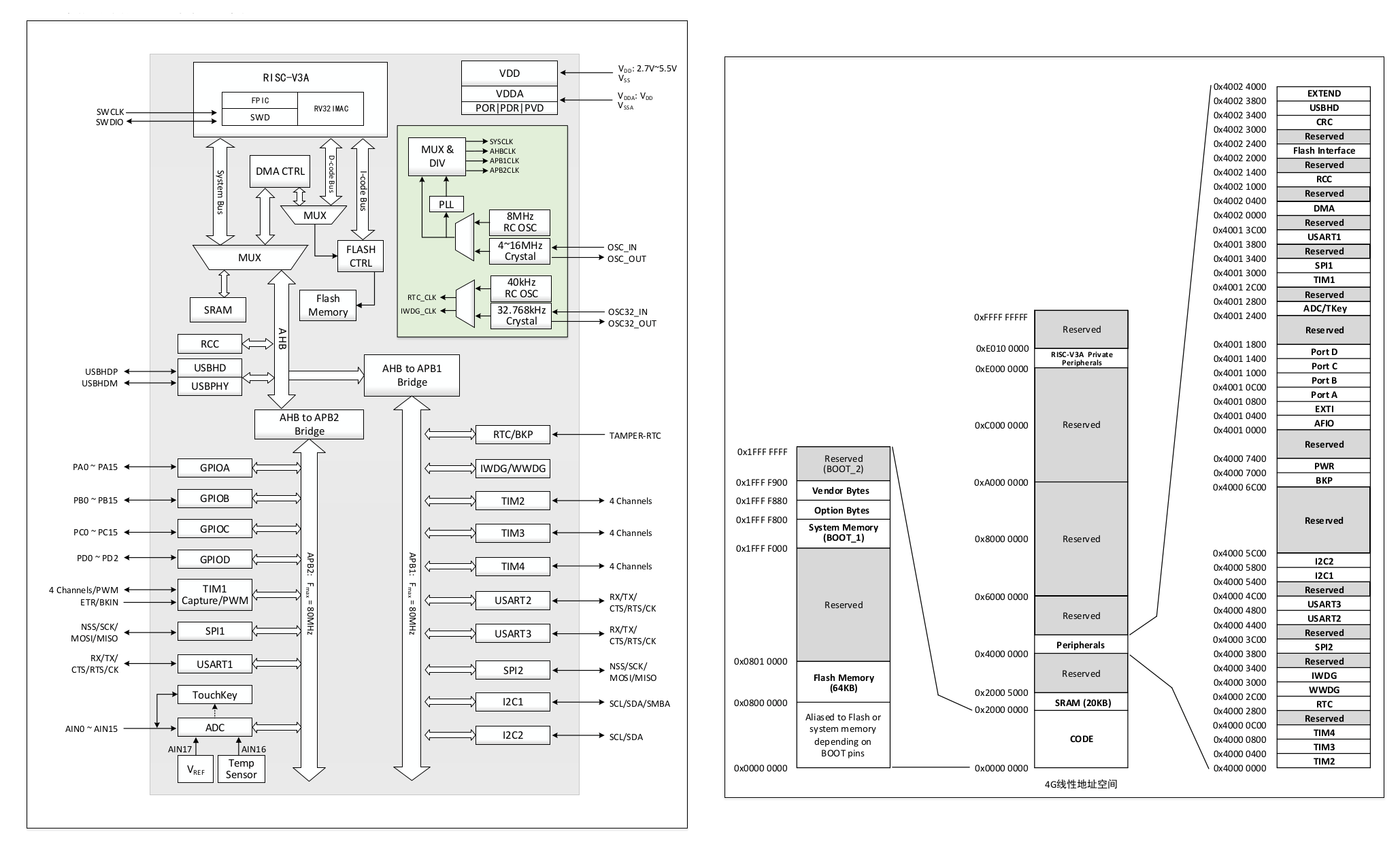Last year, WCH introduced their first RISC-V MCU with CH572 Bluetooth LE microcontroller which came with 10KB SRAM and a not so convenient 96KB OTP flash. But I’ve just been informed the company has introduced their first general-purpose RISC-V MCU family with several CH32V103 microcontrollers featuring up to 64KB Flash and 20KB SRAM, and all sort of peripherals you’d expect from a general-purpose MCU.

WCH CH32V103 key features and specifications:
- CPU Core – 32-bit RISC-V (RV32IMAC) core @ up to 72/80 MHz called ” RISC-V3A”
- Memory – 10KB or 20KB SRAM
- Storage – 32KB or 64KB flash
- Peripherals
- 1x USB 2.0 Full Speed Host/Device
- Up to 2x SPI (master/slave), up to 2x I2C, up to 3x USART
- Up to 16x 12-bit ADC/touch key
- 37x or 51x GPIOs
- Up to 3x general-purpose timers, 1x advanced timer, 2x watchdog timers, 1x Systick
- Supply Voltage – 2.7 to 5.5V
- Package – LQFP48, QFN48 or LQFP64
- Temperature Range – -40°C to 85°C

There are currently four CH32V103 parts:
- CH32V103C6T6 with 32KB flash, 10KB SRAM in LQFP48 package
- CH32V103C8T6 with 64KB flash, 20KB SRAM in LQFP48 package
- CH32V103C8U6 with 64KB flash, 20KB SRAM in QFN48X7 package
- CH32V103R8T6 with 64KB flash, 20KB SRAM in LQFP64M package

The launch of WCH CH32V103 microcontroller also means GigaDevice GD32V general-purpose RISC-V MCU gets some competition. The latter does have a larger family however with up to 128KB flash and 32KB SRAM, an RV32IMAC core clocked at 108 MHz, and a choice of 36-pin, 48-pin, 64-pin, and 100-pin packages.
Thanks to Kali Prasad for the tip.

Jean-Luc started CNX Software in 2010 as a part-time endeavor, before quitting his job as a software engineering manager, and starting to write daily news, and reviews full time later in 2011.
Support CNX Software! Donate via cryptocurrencies, become a Patron on Patreon, or purchase goods on Amazon or Aliexpress





If anybody knows how/where/when to get a development board for this I’d love to know so I can update https://github.com/esmil/gd32vf103inator to support this chip too.
So another STM32F103 “like” ?
Wait for a BluePill.
I’m curious about the 2.7 to 5.5V supply voltage spec. 5V tolerant I/O is great, but full 5V support for core and output is a heck of a bonus. Expecially if it works just fine at both 3.3V and 5V.
Yup, only with RISC-V cores. The only downside is documentation. They’re almost always in Chinese and the companies don’t provide proper support.
I use STM32F103 bluepill to drive RGB and RGBW adressable LED strips. The advantage of BluePill is – it has nice DMA – to SPI implementation and can drive two strips in parallel. LED strips are very timing-demanding components and sloppy control makes them work unreliably. That is where bluepill really shines. For everything else Arduino is better since it has better libraries (but not for LED strips!) So, to make sense for makers like me, CH32 should at least have a good DMA-to-SPI implementation and a good library supporting it. Otherwise it is just a paper press. Will it?
Honestly, I don’t think the industry cares about how easy / difficult it is for you to get LEDs blinking.
I have found a CH32V103 dev board on AliExpress and ordered it. I have found some repos on github with the firmware libraries, however, I have not been able to locate an OpenOCD branch (or other debugger) with support for this